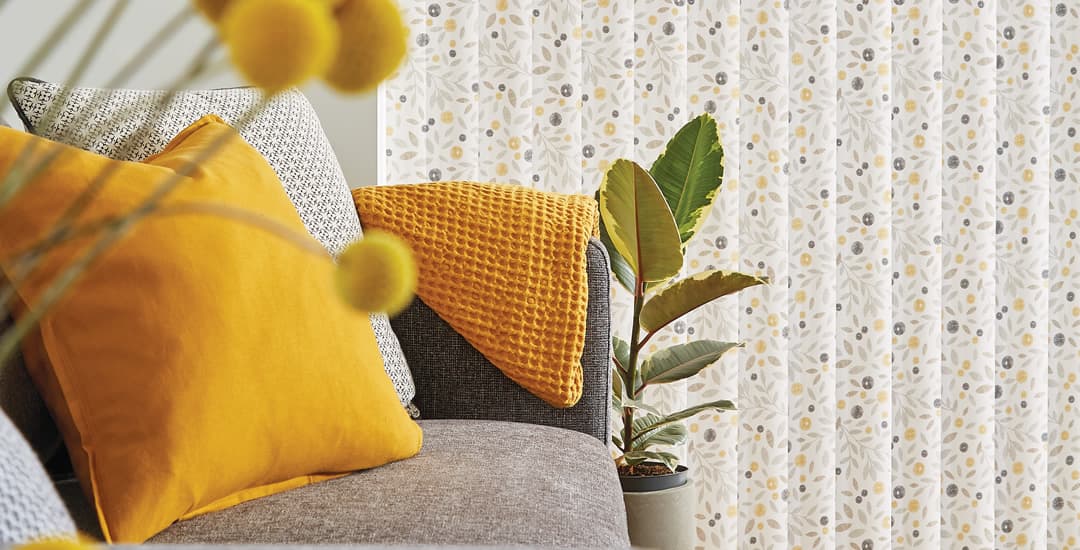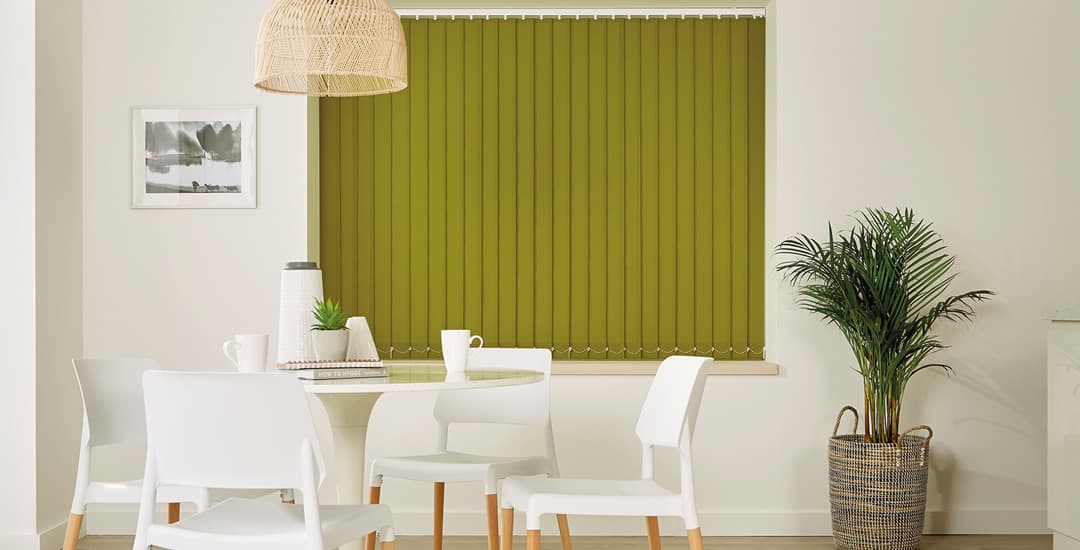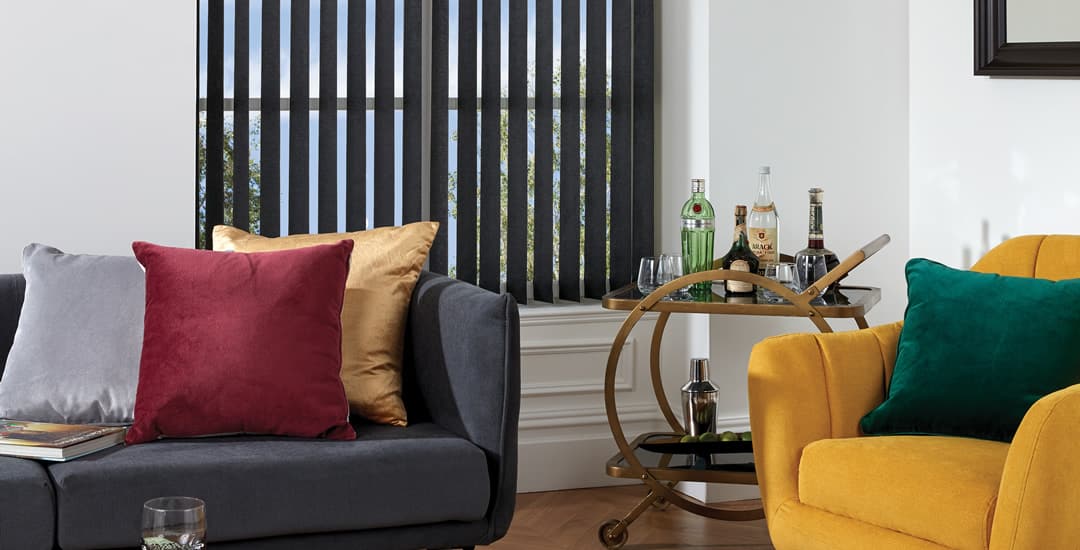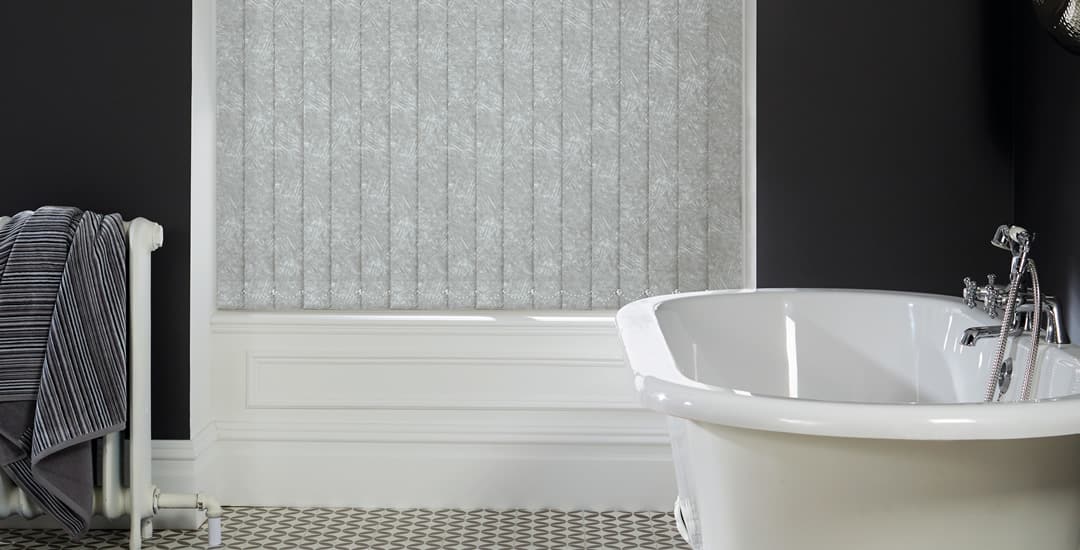
You can turn them either way. Whether you turn them to the left or the right, they will still lie flush against each other and negate the possibility of any gaps, as long as they don’t get knocked or blown about in a breeze.
A lot of people assume that there must be a right and a wrong way to turn vertical blind louvres, or perhaps, a way that leaves gaps and a way that prevents them, but this is not true.
I tend to think that most of the time when people ask about which way to turn vertical blind louvres for privacy, they’re confusing vertical blinds with Venetian blinds – these latter being the type of blinds made up of horizontal slats which are again tilted, and which have a distinctive “up” side and “down” side, which can potentially leave gaps depending on the angle.
Anyway, that’s the simple version; if you want a more comprehensive answer to which way you turn vertical blind louvres and why, this blog post will tell you more.
Which way do you turn vertical blinds for privacy without gaps between the louvres?

Vertical blind louvres can be turned in either direction with their control wand; they can rotate freely up to an angle of 180° to the left or the right, depending on your preference. There is no right or wrong way to tilt the louvres, and assuming that you rotate them fully so that they lie flush against each other, they can be fully closed in either direction.
Which way do you tilt vertical blinds for privacy without losing your own view of outside?

You don’t have to close your vertical blind louvres all the way of course; whilst you should close them all the way (in either direction) if you want to ensure that it is physically impossible for anyone outside to see into your room in any way and from any angle, partially closing them or doing what I like to call a “tactical tilt” may well be more in line with what you’re after.
If you want to retain at least a partial view of the outside world or you want to keep getting as much natural light as possible without letting passers-by see in, which way do you tilt vertical blinds for privacy? Basically, in whichever direction leaves the open gaps tilted away from yourself and/or the things in the room you’re trying to keep discreet.
For instance, if you’re working at your desk and don’t want to feel as if people from outside are judging your solitaire score or you’d rather not let them see the sort of tech setup you have in play full stop, close the blind but then tilt the louvres in such a way as to angle the openings/gaps between the louvres away from the parts of the room you want to keep under wraps.
Which way do you turn vertical blinds for privacy and maximum insulation?

If you bought a vertical blind with a blackout or particularly, thermally insulating blackout finish, you might also be wondering which way to turn the louvres to maximise privacy and also, boost the blind’s insulating properties.
The insulating coating used for vertical blinds is on what we think of as the back or street-facing side of the blind; and so to maximise privacy whilst also maximising your blind’s chances of keeping the cold on the outside of the window (or the sun, in summer) it’s best to turn the louvres to leave the coated side of the blind facing outwards.
However, because that insulating coating and of course, the louvres of the blind itself are very slender, there’s not really much in it and it’s not going to make a big difference in the greater scheme of things if you tilt the louvres the other way!




